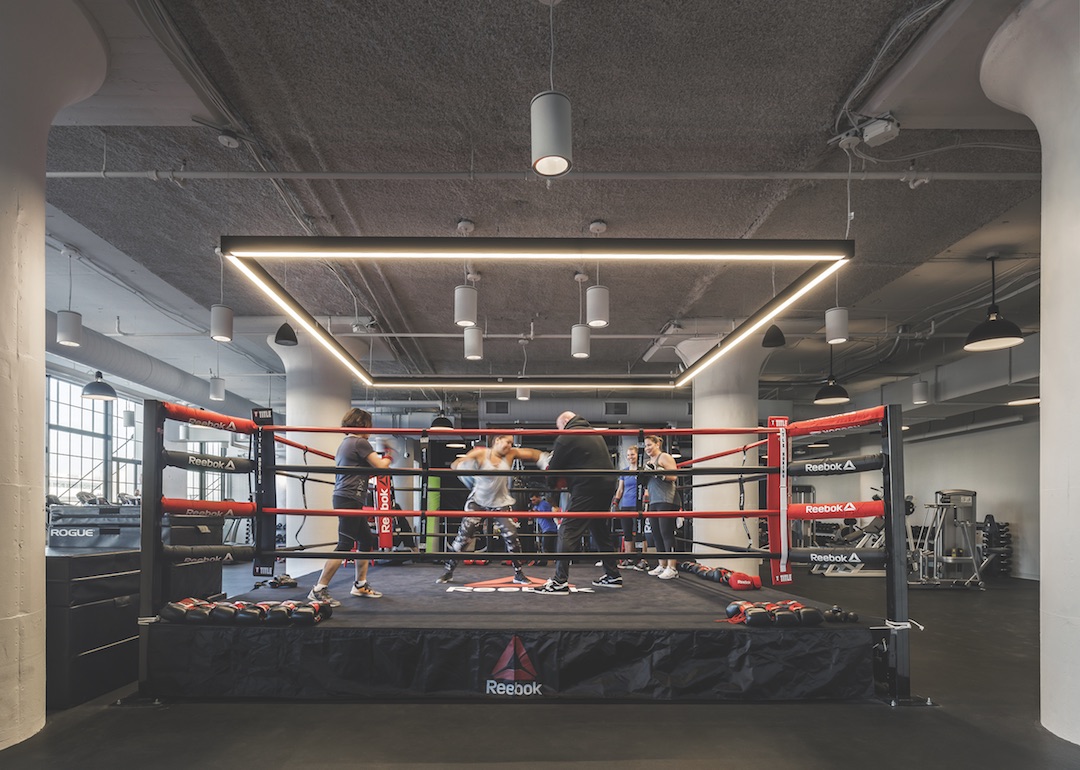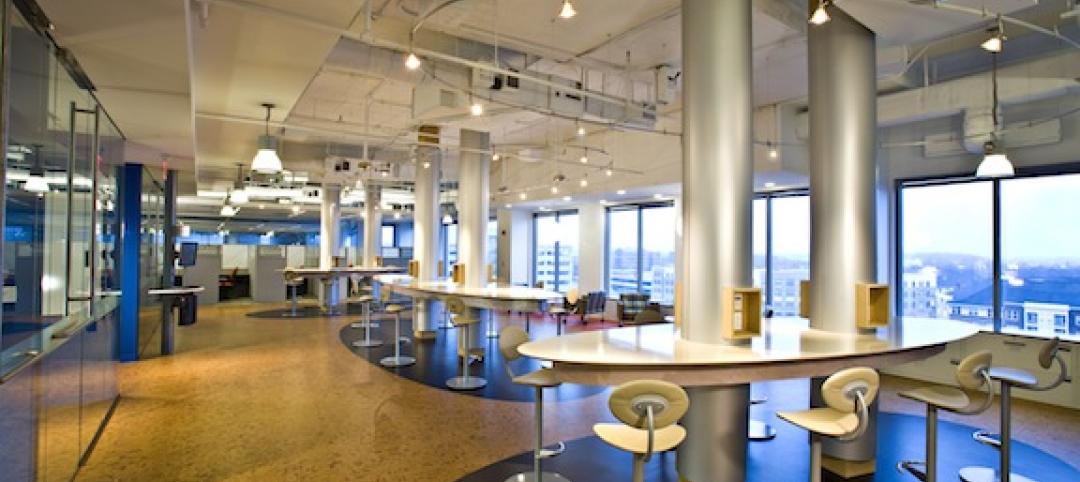Time Warner’s new 1.5-million-sf headquarters will bring together more than 5,000 employees representing five distinct media and entertainment brands: Time Warner, Warner Bros., Turner, CNN, and HBO. The joint workplace will be housed in the 30 Hudson Yards tower under construction on Manhattan’s West Side.
Time Warner believes the consolidated office will deliver bottom-line benefits—not just cost savings but also "a great space for our employees," says Joel Brenner, AIA, Vice President of Global Project Management.
Many companies recognize the value of creating a centralized work community. “We’ve seen several office consolidations and moves to take advantage of new technologies and having all employees under one roof,” says Dan Novack, Vice President, Business Acquisition, Balfour Beatty.
See also: Top 200 Office Architecture + AE Firms - 2018 Giants 300 rankings
See also: Top 90 Office Engineering + EA Firms - 2018 Giants 300 rankings
See also: Top 120 Office Construction + CM Firms - 2018 Giants 300 rankings
Fannie Mae, the federally owned mortgage loan company, is consolidating its Washington, D.C., headquarters from five locations to the new Midtown Center downtown. The new space, which has 80% fewer enclosed offices, could save taxpayers $300 million over the term of a 15-year lease.
Fannie Mae also plans to relocate workers from multiple locations across Northern Virginia to a single office at Reston Gateway, a two-tower, 1.1 million-sf office complex under development in Reston, Va. The project will have a 20-foot-high "super floor" that spans both buildings to provide a multi-functional amenities/community space, says Novack.
Because the current workforce is composed of four distinct generations—each with its unique needs, preferences, and values—office designers are building flexibility into the spaces they create.
“Millennials and Gen Y employees are digital natives who prefer a work environment where they can choose how, where, and with whom they work and collaborate,” says Stantec's Angie Lee, FAIA, IIDA, LEED AP, Senior Principal. “While individual space keeps getting smaller, a new menu of custom-designed spaces and activities is on the rise.”
To meet the varying preferences of a multi-generational workforce, designers recognize they must first understand the user experience (UX). “User profiling is becoming a top priority in workplace design,” says John Capobianco, Design Director and Principal, Interior Architects. The firm went through an extensive workplace strategy process, including visioning sessions and focus groups, for the design of a consulting firm’s new office—"both from a current employee perspective and a recruiting one,” says Capobianco.
Now that Millennials make up the largest group in the U.S. labor force, many of today’s office spaces reflect a blurring of the traditional distinctions between the work and non-work.
“Because work, live, and play are no longer considered
distinct activities, companies need to design their space to support every activity, including socializing, learning, and community building,” says Andy Cohen, FAIA, IIDA, Co-CEO of Gensler. “This affects everything from how we think about work and co-working to mobility and buying trends, all of which can make a tremendous impact on how we approach and deliver design.”
See Also: University trends 2018: Schools are desperately searching for ways to economize
In late 2017, Reebok relocated its headquarters from suburban Boston to the city's Seaport District. Housed in a former waterside storehouse for the South Boston Army Base, the 220,000-sf activity-based workplace is designed as a collection of neighborhoods. There are no assigned seats.
A two-story fitness center features a boxing ring alongside cycling, yoga, and dance studios. Visitors can order customized shoes—and watch them being assembled—at the first-floor flagship retail space. Beyond seeking to attract top-tier design talent, Reebok wanted to energize its maker culture and integrate its brand within Boston’s innovation community.
BUILDING THE TECHNOLOGY INFRASTRUCTURE
The growth of collaborative work environments is driving a proliferation of innovative ceiling, wall, and floor systems.
“A new headquarters space could have over 100 light fixture types, a dozen floor and ceiling systems, and a variety of color schemes and finished wall surfaces to create a more comfortable and healthy workspace for employees,” says James Donaghy, Executive Chairman at Structure Tone.
Today’s workplaces are also equipped with sophisticated conference centers and public assembly areas with increasingly complex audio-visual and IT systems that impact construction sequencing and project scheduling, says Donaghy.
“We must tighten up the construction schedule on submittals and material delivery to ensure we start and complete above-ceiling commissioning and inspections earlier to give the A/V and IT contractors sufficient time to complete their work,” he says. “Then these new systems must be tested and commissioned before the move.”
Office lobbies are becoming active social spaces that include lounge seating, art installations, and coffee bars. “Clients are turning their lobbies into destinations instead of pass-through spaces,” says Bert Rahm, Vice President and General Manager of Turner Construction Company. “They’re raising ceiling heights, removing columns, and emphasizing natural light to create a much more inviting atmosphere for tenants, visitors, and the general public.”
“Smart cities and co-working groups are challenging the traditional real estate model,” says David Bourke, Co-CEO and Co-President, Interior Architects. “The role of design has never been more important.”
Related Stories
| Jan 21, 2011
Manufacturing plant transformed into LEED Platinum Clif Bar headquarters
Clif Bar & Co.’s new 115,000-sf headquarters in Emeryville, Calif., is one of the first buildings in the state to meet the 2008 California Building Energy Efficiency Standards. The structure has the largest smart solar array in North America, which will provide nearly all of its electrical energy needs.
| Jan 19, 2011
Baltimore mixed-use development combines working, living, and shopping
The Shoppes at McHenry Row, a $117 million mixed-use complex developed by 28 Walker Associates for downtown Baltimore, will include 65,000 sf of office space, 250 apartments, and two parking garages. The 48,000 sf of main street retail space currently is 65% occupied, with space for small shops and a restaurant remaining.
| Jan 7, 2011
Mixed-Use on Steroids
Mixed-use development has been one of the few bright spots in real estate in the last few years. Successful mixed-use projects are almost always located in dense urban or suburban areas, usually close to public transportation. It’s a sign of the times that the residential component tends to be rental rather than for-sale.
| Jan 4, 2011
An official bargain, White House loses $79 million in property value
One of the most famous office buildings in the world—and the official the residence of the President of the United States—is now worth only $251.6 million. At the top of the housing boom, the 132-room complex was valued at $331.5 million (still sounds like a bargain), according to Zillow, the online real estate marketplace. That reflects a decline in property value of about 24%.
| Jan 4, 2011
Grubb & Ellis predicts commercial real estate recovery
Grubb & Ellis Company, a leading real estate services and investment firm, released its 2011 Real Estate Forecast, which foresees the start of a slow recovery in the leasing market for all property types in the coming year.
| Dec 17, 2010
Vietnam business center will combine office and residential space
The 300,000-sm VietinBank Business Center in Hanoi, Vietnam, designed by Foster + Partners, will have two commercial towers: the first, a 68-story, 362-meter office tower for the international headquarters of VietinBank; the second, a five-star hotel, spa, and serviced apartments. A seven-story podium with conference facilities, retail space, restaurants, and rooftop garden will connect the two towers. Eco-friendly features include using recycled heat from the center’s power plant to provide hot water, and installing water features and plants to improve indoor air quality. Turner Construction Co. is the general contractor.
| Dec 13, 2010
Energy efficiency No. 1 priority for commercial office tenants
Green building initiatives are a key influencer when tenants decide to sign a commercial real estate lease, according to a survey by GE Capital Real Estate. The survey, which was conducted over the past year and included more than 2,220 office tenants in the U.S., Canada, France, Germany, Sweden, the UK, Spain, and Japan, shows that energy efficiency remains the No. 1 priority in most countries. Also ranking near the top: waste reduction programs and indoor air.
| Dec 7, 2010
Hot rumor: Norman Foster designing Apple’s new campus
Lord Norman Foster, reportedly has been selected to design Apple’s new campus in Cupertino, Calif. If the news is true, Foster is a good match for Apple say experts. Foster built his celebrity by marrying big gestures to technological wizardry. And, unlike some starchitects, he has glommed onto the environmental revolution—something Apple has made a point of embracing, too.
| Dec 7, 2010
Product of the Week: Petersen Aluminum’s column covers used in IBM’S new offices
IBM’s new offices at Dulles Station West in Herndon, Va., utilized Petersen’s PAC-1000 F Flush Series column covers. The columns are within the office’s Mobility Area, which is designed for a mobile workforce looking for quick in-and-out work space. The majority of workspaces in the office are unassigned and intended to be used on a temporary basis.













